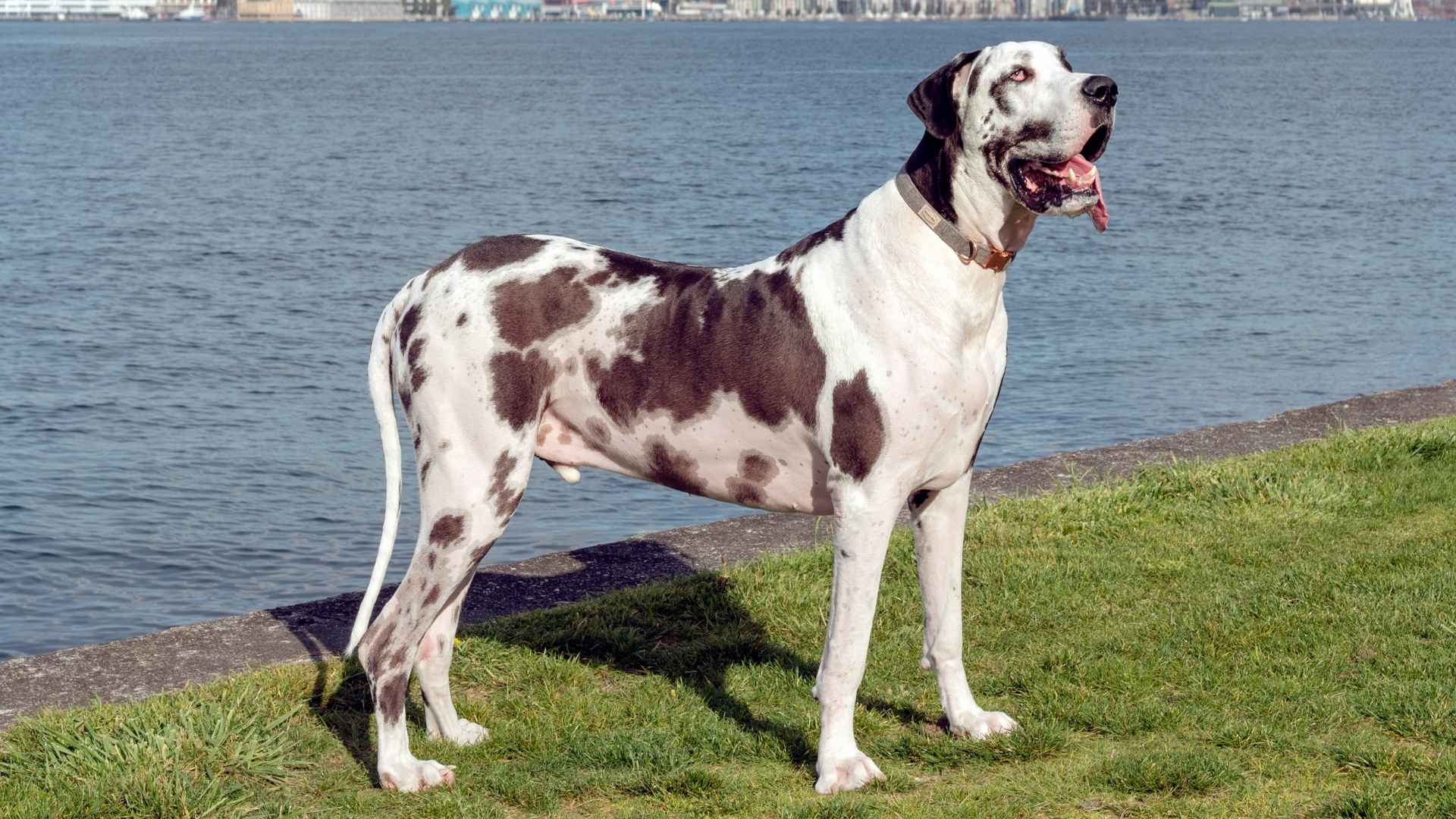Many overlook lifespan when choosing a dog. While impressive in stature, large breeds often have a shorter average lifespan than smaller dog breeds. This is especially true for some purebred dogs, where genetics and size play a role.
Understanding how factors like dog food, healthcare, and activity impact longevity can help potential owners prepare for what lies ahead. Awareness of these variables is essential when considering breeds that are known for their strength but also their limited lifespan.
Though it’s easy to be drawn to size or power, it’s just as important to know what that means long-term. Some dogs bring intense loyalty and presence, yet for fewer years than expected.
Dogs with shorter lifespans still bring joy, loyalty, and protection during their years. They’re more than just pets—they become part of the family, offering a bond that is treasured even in their limited time.
Did you know?
Larger dog breeds generally have shorter lifespans than smaller ones, as they age faster, facing more health risks early on.
Short Lifespan Dog Breeds
1. Rottweiler
Rottweilers have a short lifespan of 8 to 10 years, largely due to their large size. These intelligent, strong dogs need consistent exercise and mental stimulation. They excel at guarding and protecting, but require firm training and socialization to avoid aggressive tendencies.
Exercise is crucial for Rottweilers. They require regular physical activity, such as brisk walks and playtime, to remain fit and balanced. If not sufficiently exercised, they may develop destructive behaviors due to pent-up energy. A well-exercised Rottweiler is a happy one.
According to WebMD, grooming needs for Rottweilers are relatively easy. Their short coat sheds but requires minimal brushing. Regular ear cleaning and dental care are important, as large dogs are prone to health issues like ear infections and gum disease. Regular grooming maintains their hygiene.
While Rottweilers are generally healthy, they can be prone to certain health issues. Hip dysplasia, heart problems, and cancers are common. Regular vet visits are essential to catch potential problems early and maintain their overall well-being. Healthy Rottweilers can live full, active lives.
Rottweilers adapt well to different living situations but need ample space for exercise. They do best in homes with yards but can adapt to apartments with proper exercise routines. Their guarding nature makes them loyal and protective of their families.
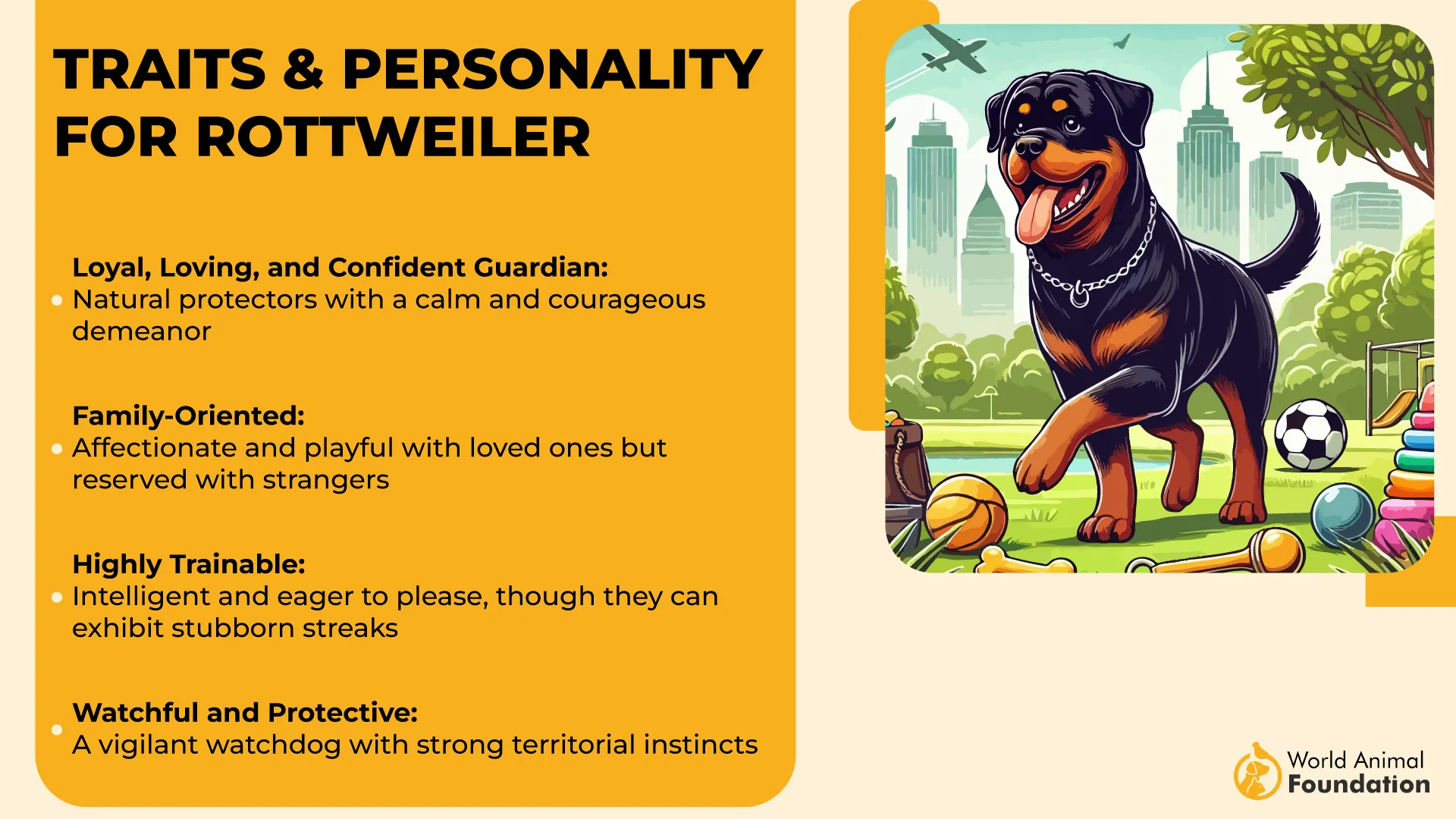
Fun Fact
Rottweilers were originally bred by the Romans as herding dogs and used to pull carts loaded with goods. They’re named after the German town of Rottweil, where they were used to drive cattle and deliver goods.
2. Bullmastiff
Bullmastiffs typically live around 8 to 10 years. Their size, combined with their protective nature, contributes to their shorter lifespan. These dogs are loyal and calm but require proper training to maintain their guarding instincts without becoming overly protective.
Though Bullmastiffs are large, their energy level is moderate. They enjoy short walks and occasional playtime but aren’t overly active. Their calm temperament makes them great companions, but they still need basic training to ensure they’re well-behaved around strangers and other pets.
Bullmastiffs have minimal grooming needs due to their short coat. Regular brushing helps manage shedding and keeps them looking tidy. They also need ear checks and dental care to avoid infections. Keeping them clean contributes to their health and comfort.
Though typically healthy, Bullmastiffs can face joint issues, bloat, and certain heart conditions. Regular vet visits help detect problems early. Their size means they’re more susceptible to these health concerns, so preventive care is crucial to their longevity.
Bullmastiffs are adaptable to apartment living, as long as they receive sufficient exercise. They prefer a calm environment and enjoy being close to their families. Their loyalty and protective nature make them great companions, provided they are well-exercised and socialized.
Fun Fact
Bullmastiffs were initially bred to guard estates against poachers. Their silent yet imposing presence made them excellent protectors. Even today, their quiet demeanor and strength make them ideal for guarding large properties.
3. Mastiff
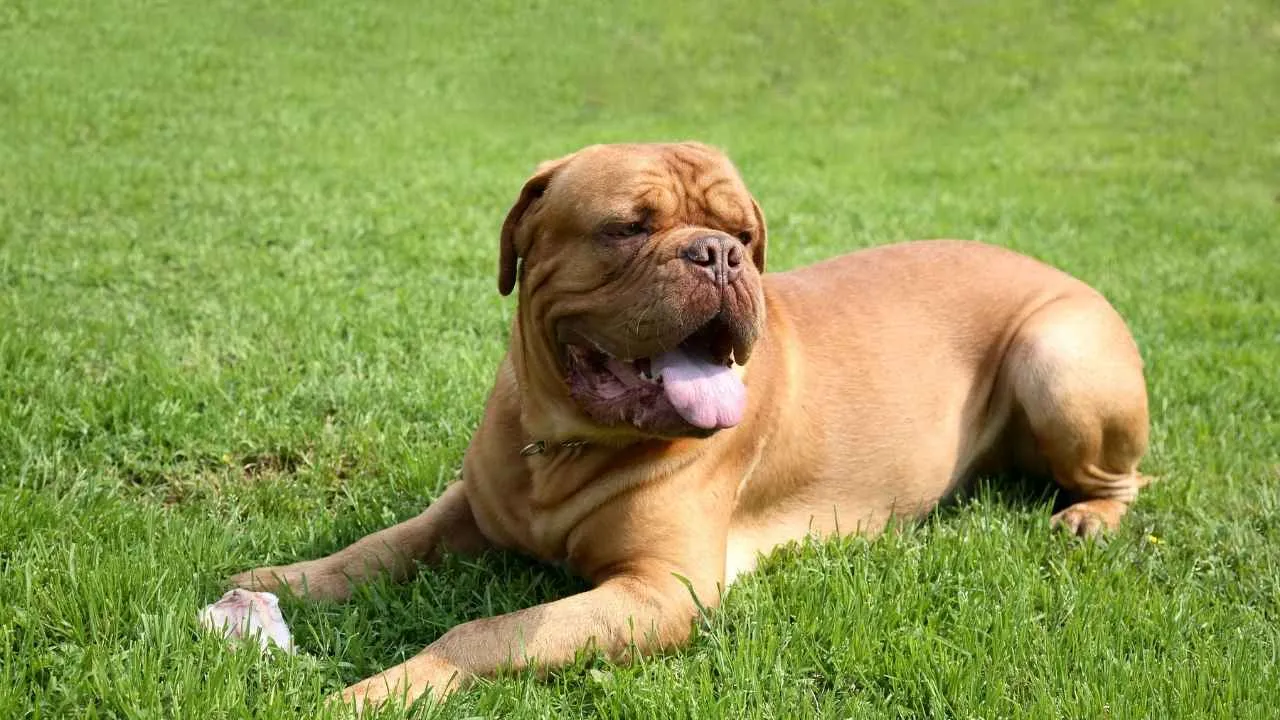
Mastiffs, one of the largest dog breeds, have a shorter lifespan of about 6 to 10 years. Their size contributes to this, but they are known for being gentle giants. Their calm nature makes them excellent companions for families and households.
Although Mastiffs are massive, their exercise needs are moderate. They enjoy walks and some playtime but don’t require intense activity. Regular, low-impact exercise helps maintain their health without putting too much strain on their large bodies, which can lead to joint issues.
Mastiffs have a short coat, so grooming is relatively simple. Brushing once a week helps manage shedding, and regular ear and dental checks prevent infections. Despite their size, maintaining their hygiene routine isn’t difficult and keeps them looking good.
Mastiffs are susceptible to health problems like hip dysplasia, bloat, and heart disease. Their large size makes them prone to these issues, which contribute to their shorter lifespan. Regular vet visits and a healthy diet can help reduce health risks and improve quality of life.
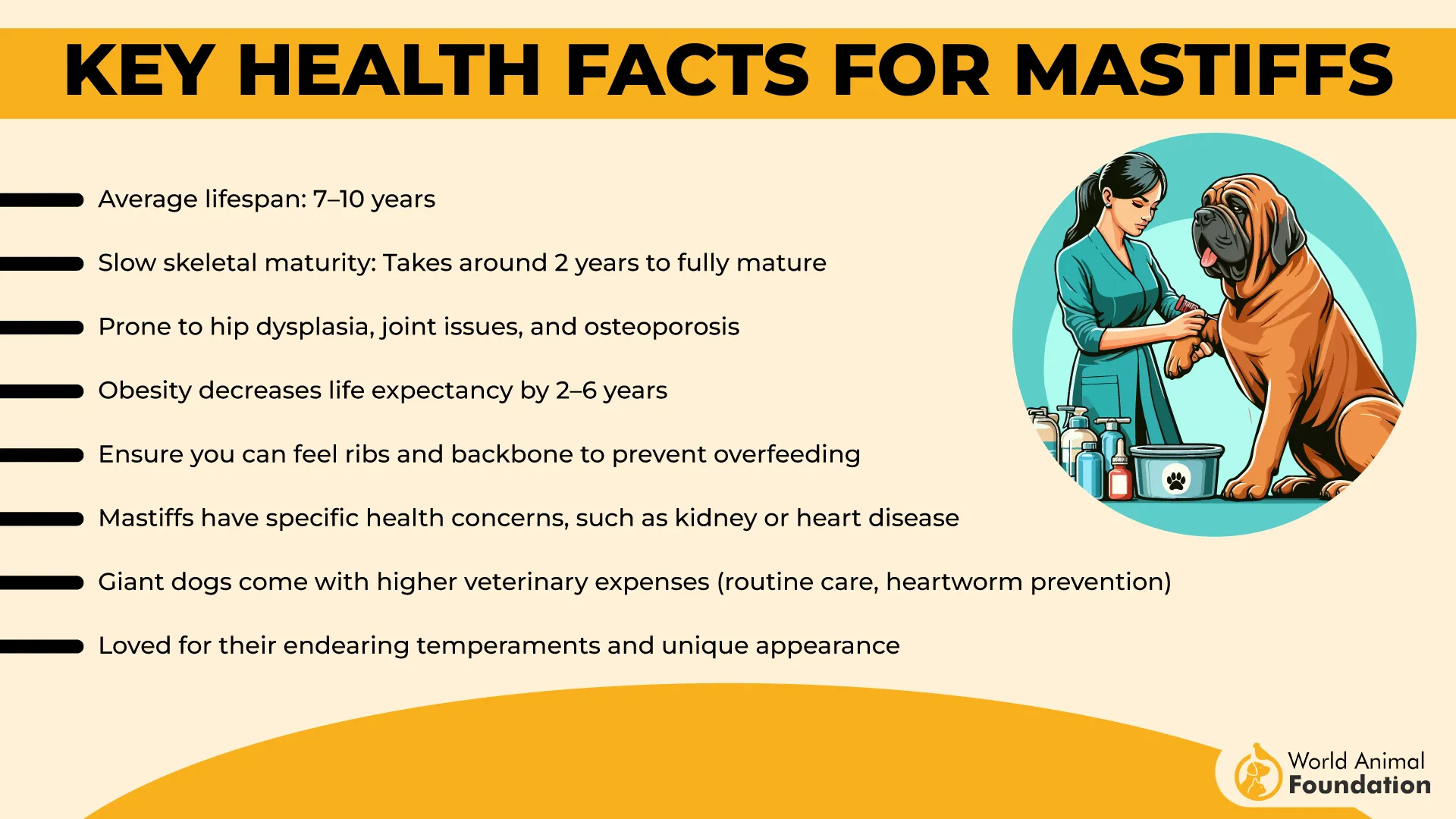
While they need space, Mastiffs can adjust to apartment living as long as they’re exercised regularly. Their calm demeanor makes them great indoor dogs, provided they’re not neglected and are given the exercise and care they need to thrive.
Fun Fact
Mastiffs have been around for centuries, once used in wars and as battle companions. Their history includes guarding castles and estates, showcasing their impressive loyalty and protective nature that continues to this day.
4. Irish Wolfhound
Irish Wolfhounds have a lifespan of 6 to 8 years, a result of their large size. Known for their calm and friendly nature, they make excellent companions, though their short lifespan is a downside for many potential owners. Despite this, they live life fully.
These dogs enjoy moderate exercise. They’re not overly energetic but still need daily walks and occasional play. They’re well-suited for families who prefer a calmer dog, but they still require training to keep their protective instincts in check.
Irish Wolfhounds have a wiry coat that needs grooming. Regular brushing prevents mats, and occasional baths keep them fresh. Their ears should also be cleaned regularly to avoid infections, as large dogs like them are prone to ear issues. Consistent grooming maintains their health.
Their large size makes Irish Wolfhounds prone to health issues like heart disease, bloat, and certain cancers. Due to their short lifespan, regular check-ups are necessary. Their size also means they should avoid strenuous activities that could cause joint strain or injury.
While they’re large, Irish Wolfhounds can adapt to apartment living with proper space. They need a calm environment and regular interaction with their family. Their gentle and loving nature makes them well-suited for family life with enough care and attention.
Fun Fact
Irish Wolfhounds were originally bred for hunting large game, including wolves and deer. Their immense size and speed made them highly effective in the field, where they could outrun and overpower large prey, earning them a place in history.
5. Bernese Mountain Dog
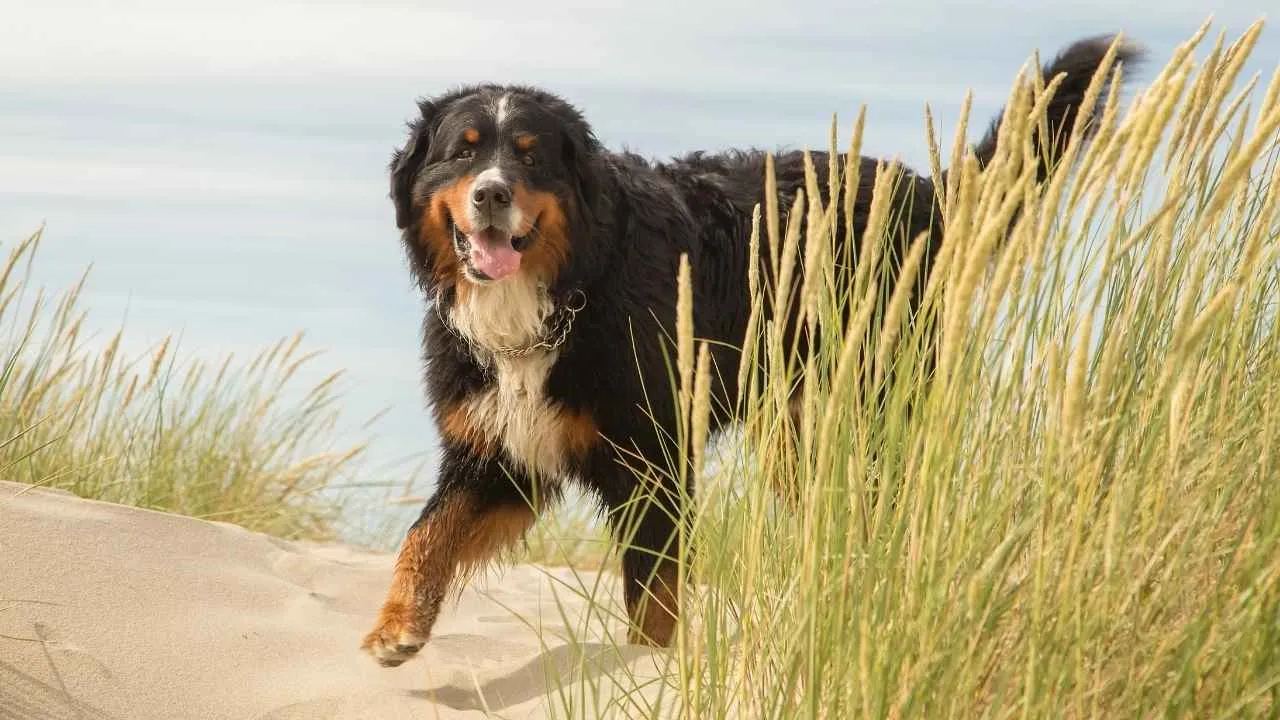
The Bernese Mountain Dog, though beloved for its charming personality, doesn’t have the longest lifespan. With an average life expectancy of 7 to 10 years, it’s important to make the most of their time with proper care.
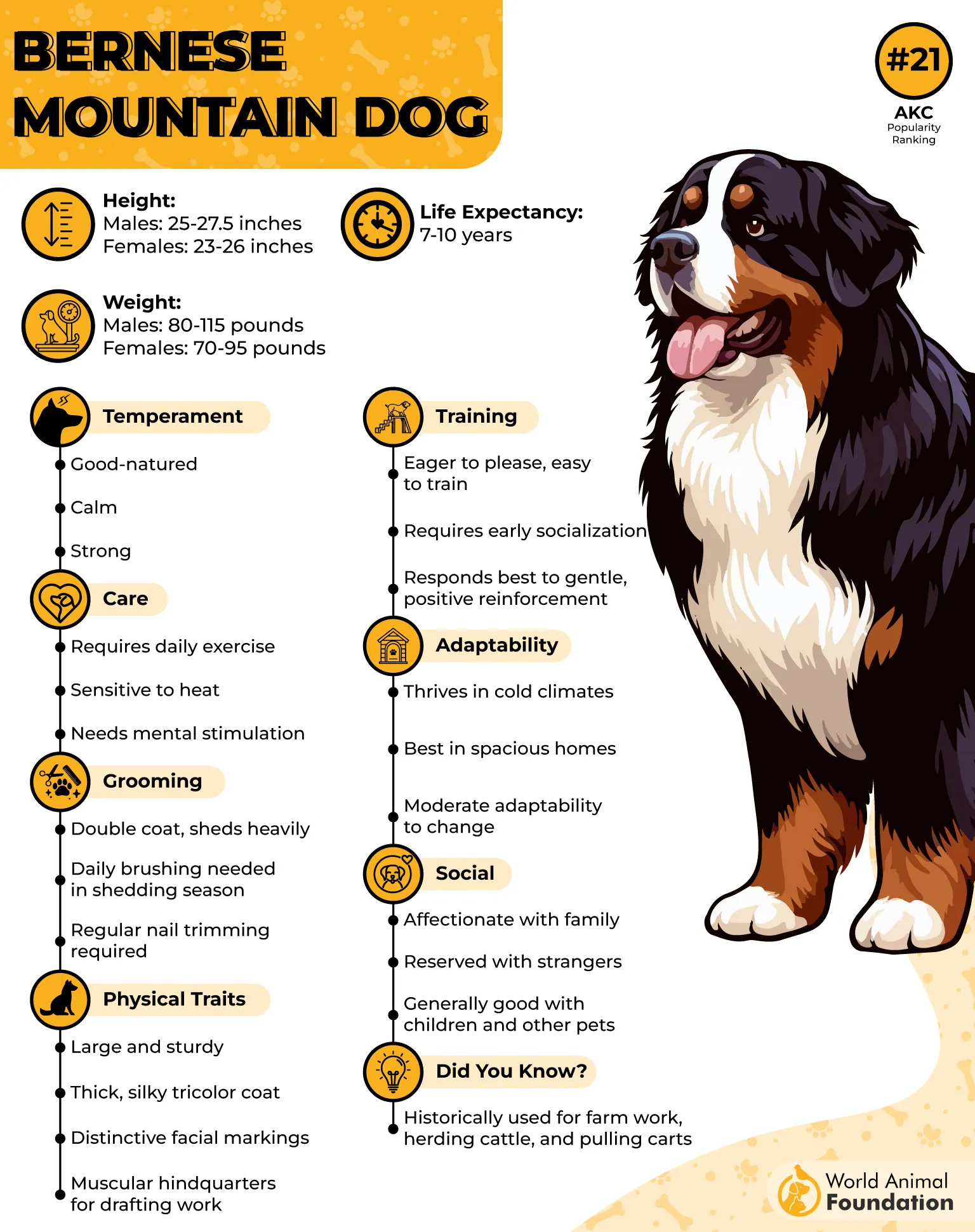
This breed is large and known for its strong, muscular frame. Bernese are calm and affectionate, making them great companions despite their shorter lifespan. However, regular check-ups and good nutrition are crucial to ensure their health throughout their lives.
As a working dog, Bernese Mountain Dogs require ample physical and mental stimulation. Daily walks and activities that keep them engaged are essential. Without enough exercise, they may become bored, leading to potential behavioral issues.
Grooming a Bernese Mountain Dog requires regular brushing due to their long, thick coat. They shed seasonally, so attention to their fur is vital, especially during shedding times. Bathing should be done occasionally to maintain their cleanliness.
Health-wise, Bernese Mountain Dogs can be prone to certain genetic issues like hip dysplasia or cancer. Keeping them at a healthy weight and following your vet’s recommendations can increase their chances for a better quality of life.
Fun Fact
Did you know the Bernese Mountain Dog was originally bred in Switzerland to herd cattle and pull carts? Their hardworking nature and versatility made them essential farm helpers for many generations.
6. Great Dane
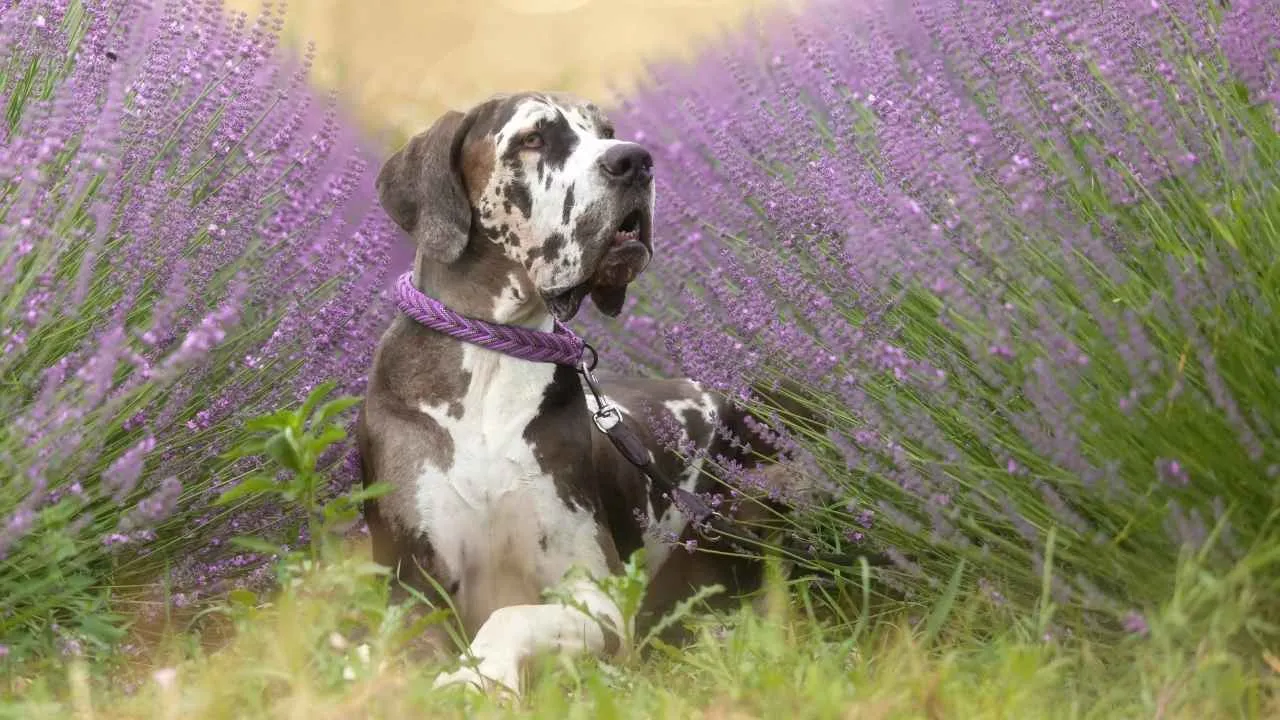
Great Danes, despite their imposing size, are another breed with a relatively short lifespan. On average, they live between 7 and 10 years. But during that time, they are truly larger-than-life companions.
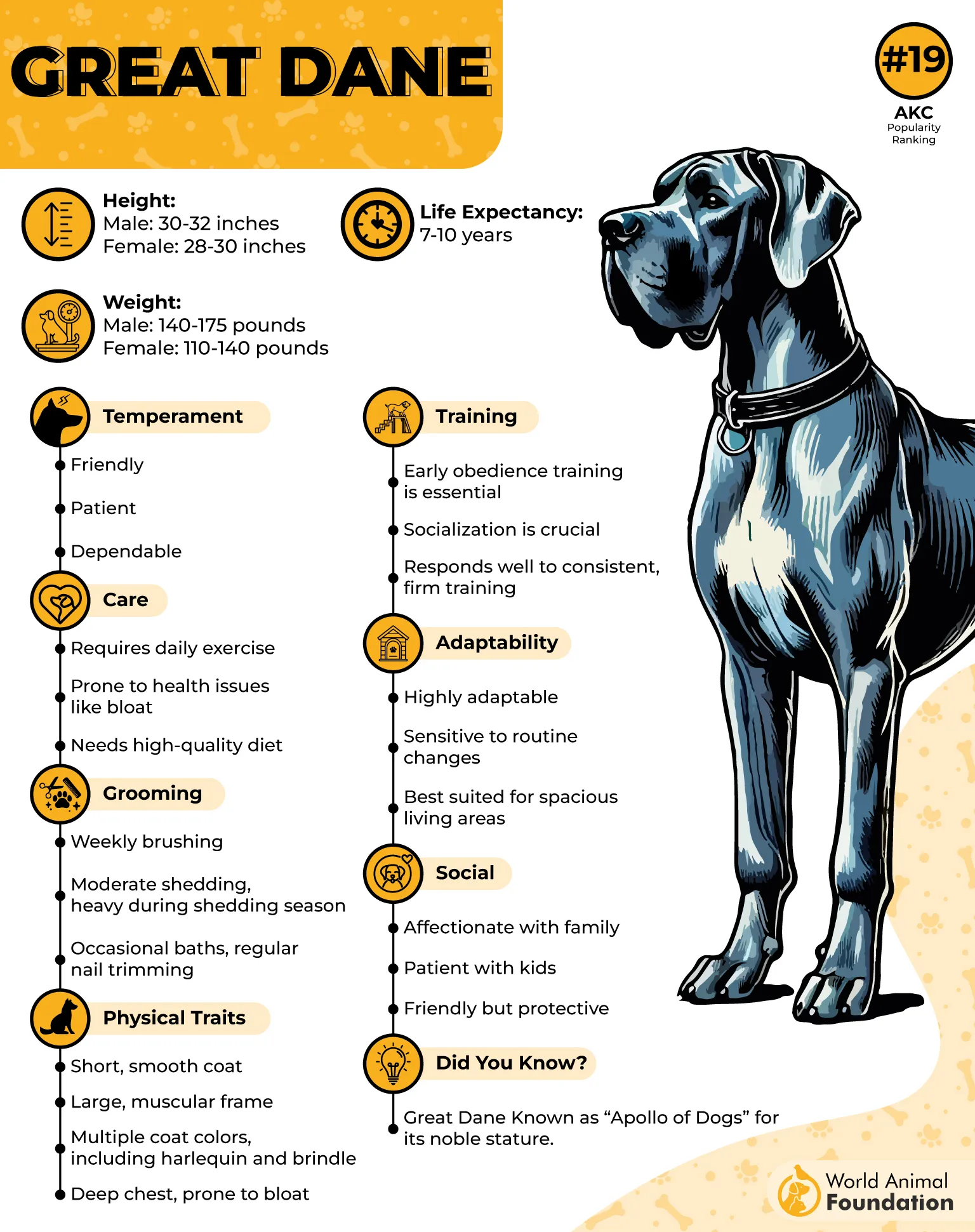
These dogs are known for their elegant stature and friendly nature. Their calm demeanor makes them excellent family dogs, though their size can be intimidating at first glance. A gentle giant, the Great Dane thrives with proper training and socialization.
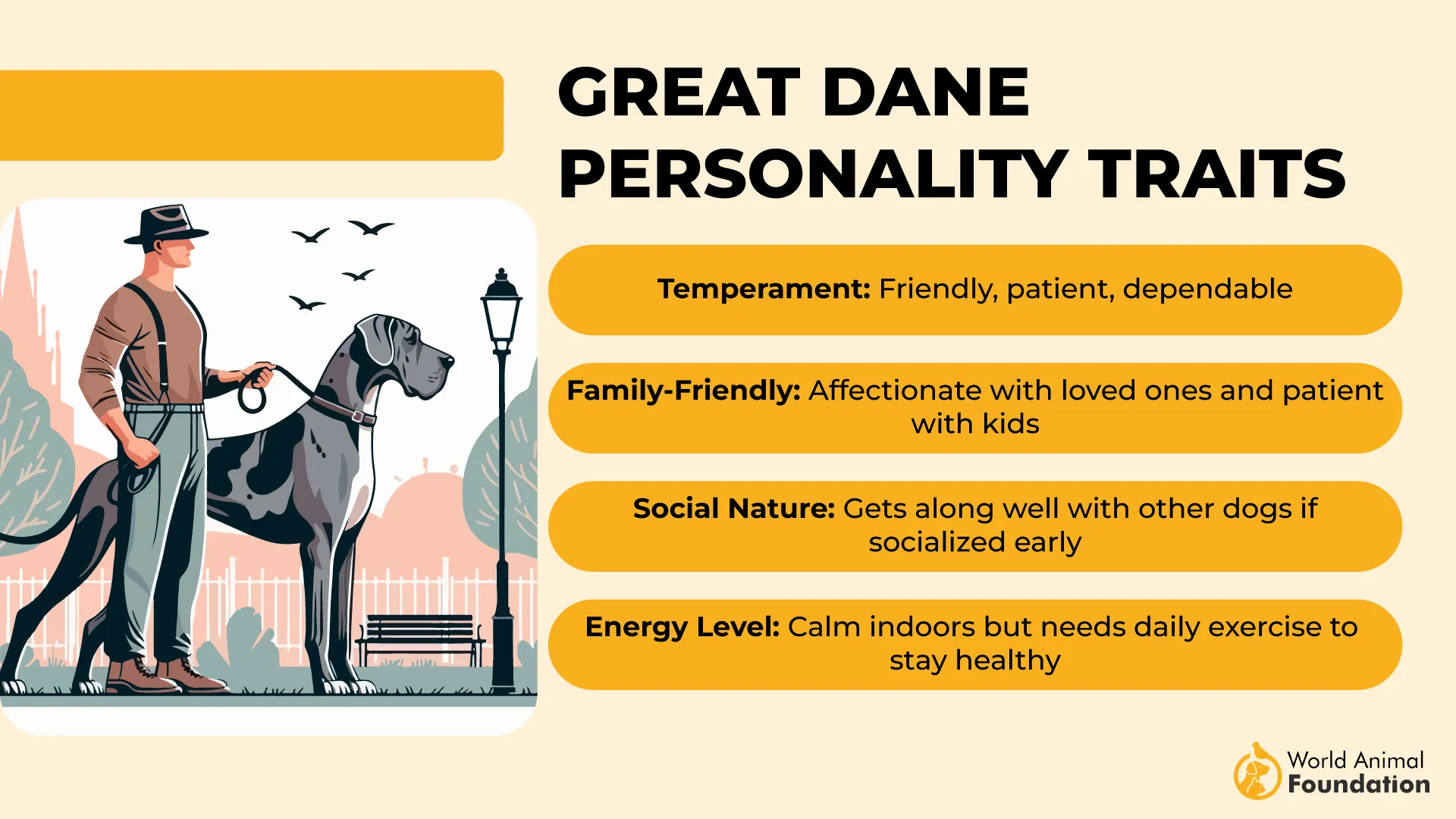
Because of their size, Great Danes require a healthy diet to maintain proper muscle mass and prevent joint issues. They are also prone to certain health conditions, so regular vet visits are essential to detect early signs of illness.
According to PetMD, training a Great Dane can be a bit challenging due to their size and strength, but with consistent reinforcement, they’re eager to please. Positive reinforcement is key to a successful training experience, as they respond well to reward-based methods.
Grooming is relatively simple, as Great Danes have short coats. However, they do shed, and regular brushing can help keep their coats sleek. Bathing should be done as needed, ensuring they stay fresh and healthy.
Fun Fact
Great Danes once held the title of the tallest dog breed in the world. One Great Dane, named Zeus, was recognized by the Guinness World Records as the tallest dog ever, standing at an impressive 44 inches at the shoulder.
7. Saint Bernard
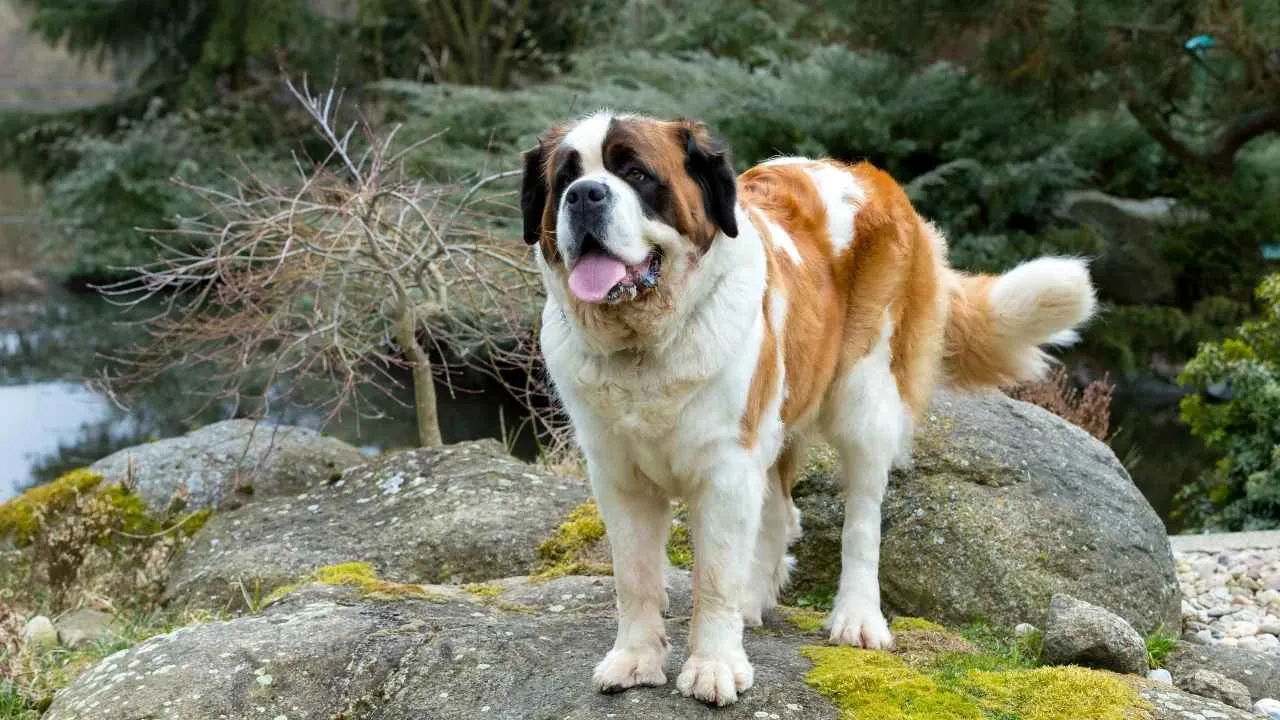
Saint Bernards are giant dogs with hearts to match. These dogs, known for their rescue work in the Swiss Alps, tend to have a shorter lifespan, typically ranging from 8 to 10 years. Their size contributes to this.
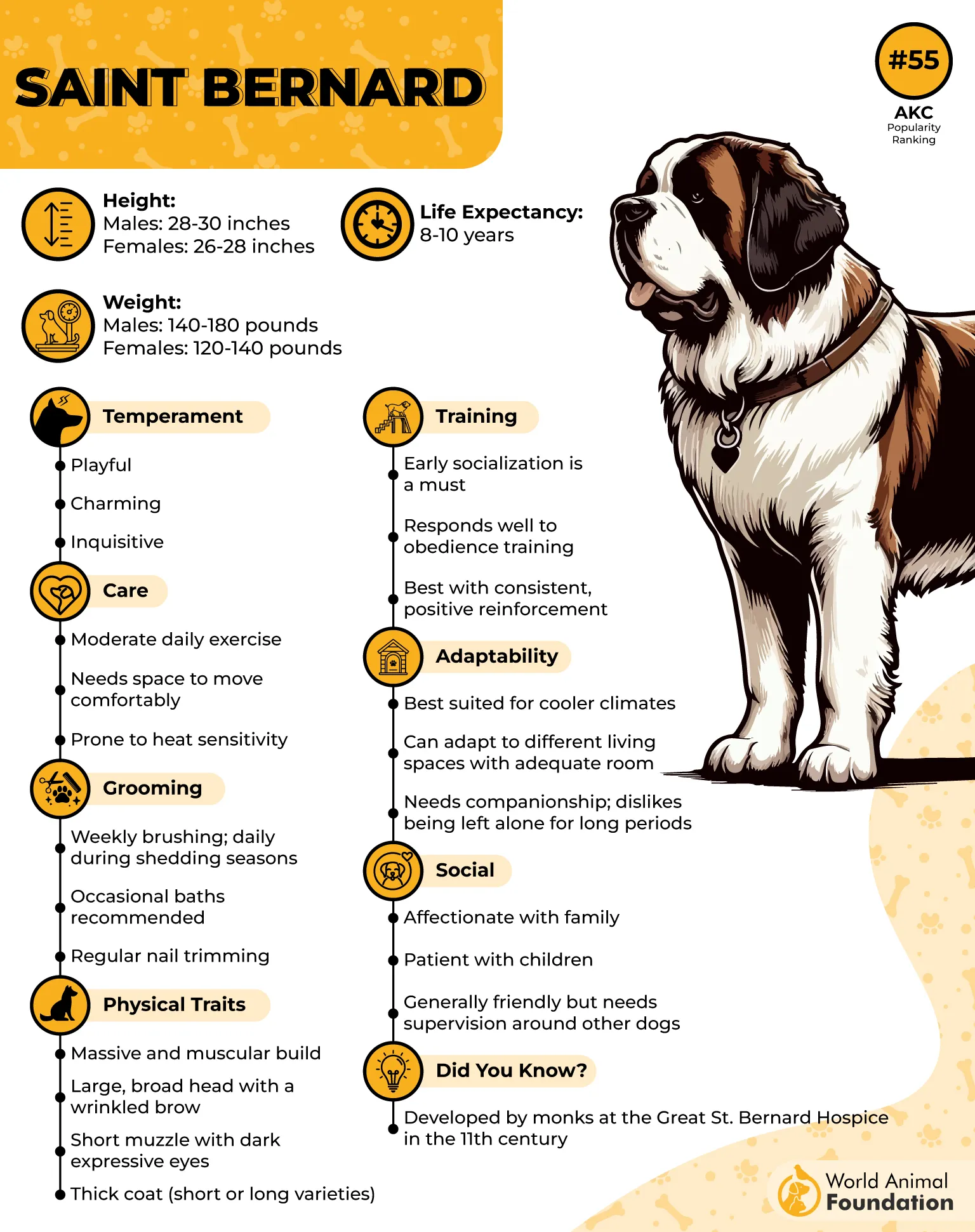
Saint Bernards are calm, gentle giants. While they require moderate exercise to stay healthy, their large size makes them prone to heart and joint issues. Regular check-ups and a balanced diet are necessary to keep them fit.
This breed thrives in cooler climates, but they also need indoor space. Saint Bernards can be prone to heat stress, so air conditioning or shaded areas are important in warmer months. Despite their size, they’re surprisingly adaptable to indoor living.
Training Saint Bernards can be rewarding, but should be done with patience. Their calm demeanor means they’re often easy to train with positive methods. Early socialization and consistent routines can help them thrive in any environment.
Although grooming is low-maintenance, Saint Bernards shed heavily, especially in spring. Weekly brushing helps keep their coat shiny and free from tangles. Bathing should be kept minimum to avoid skin irritation.
Fun Fact
Saint Bernards were originally bred for rescue missions in the Swiss Alps. Their instinct to rescue stranded travelers has made them legends. Their iconic barrels around the neck were believed to carry brandy for warmth, though it was not actually true.
8. Newfoundland
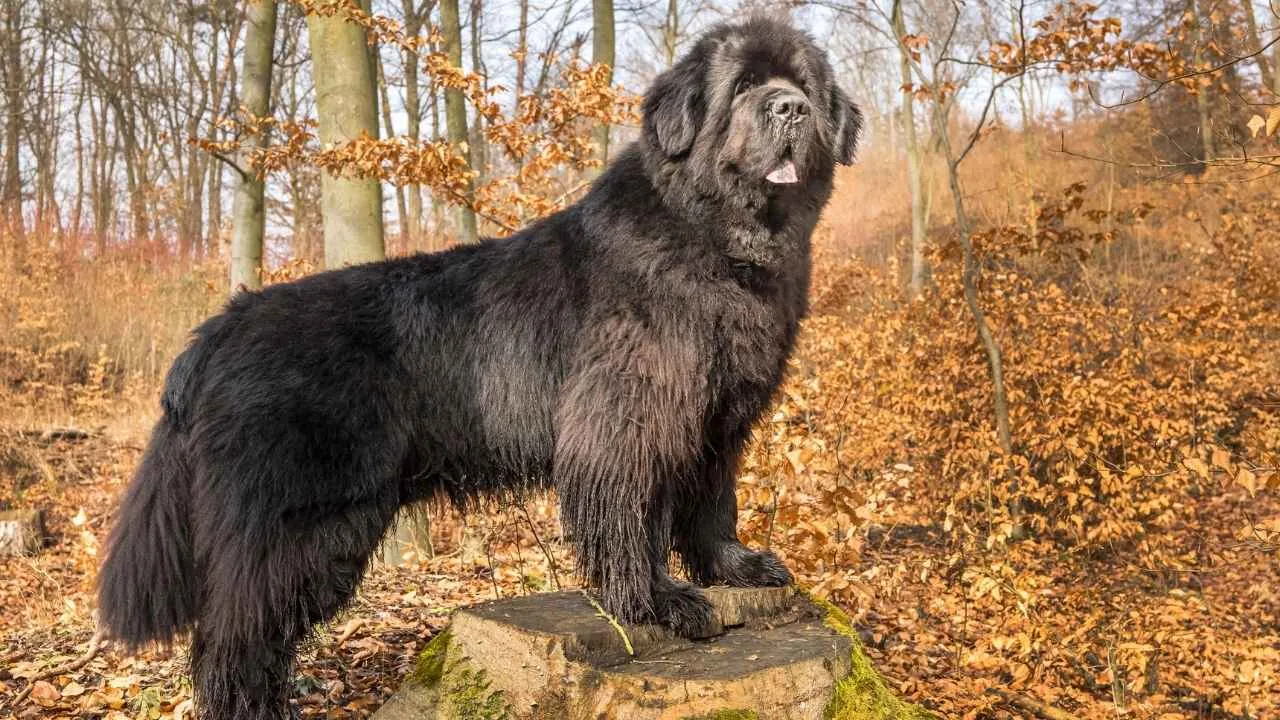
Newfoundlands are gentle and loving giants with a relatively short lifespan of 8 to 10 years. Despite their size, they are known for their calm nature, which makes them wonderful companions and excellent water rescue dogs.
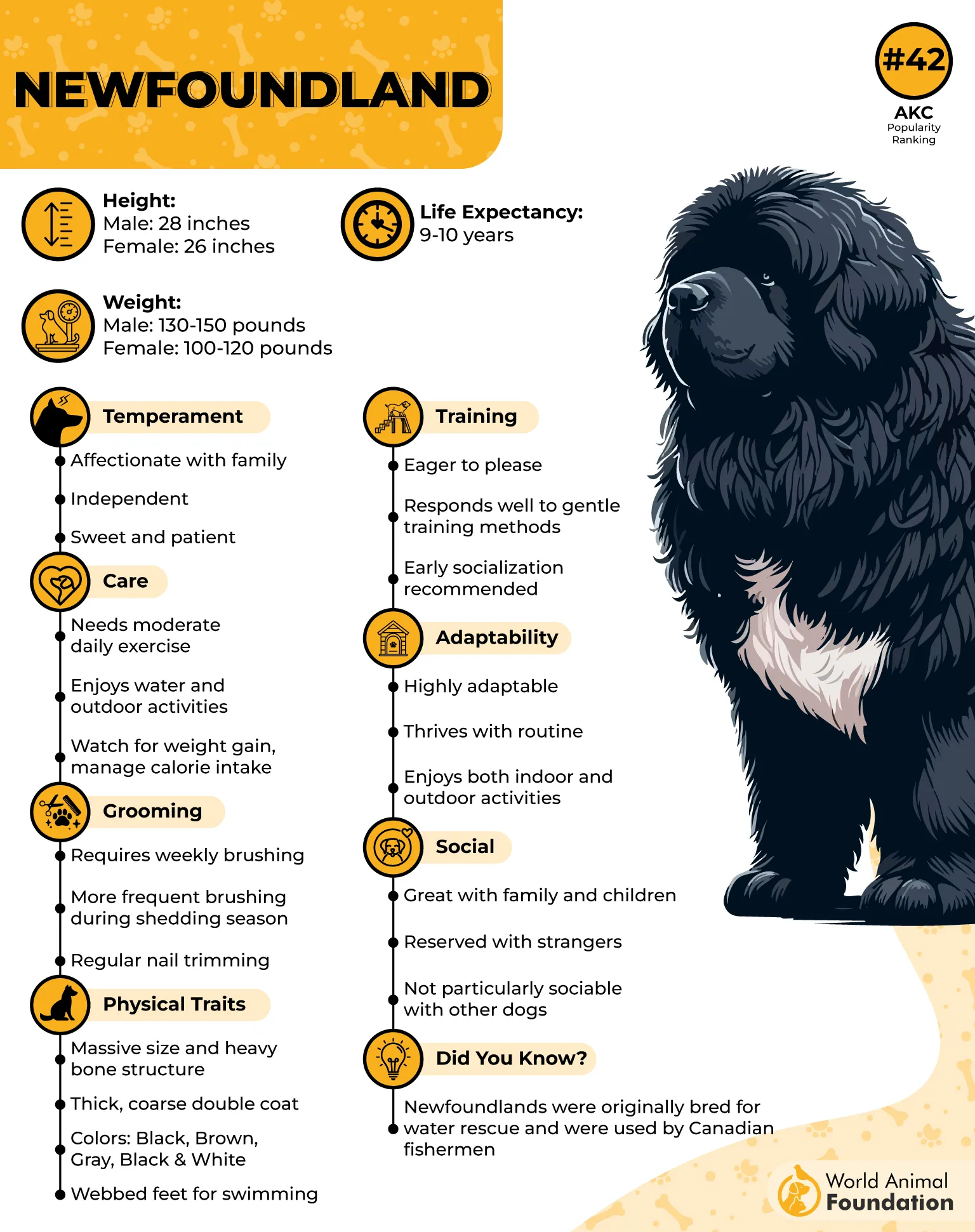
This breed requires a significant amount of exercise, particularly swimming, due to their love for water. Regular physical activity helps maintain their strength and health, keeping their weight under control to prevent joint problems.
While Newfoundland dogs are low-maintenance in terms of grooming, they do shed heavily, especially in the warmer months. Regular brushing helps manage their thick, water-resistant coats. Bathing should be done as necessary, ensuring a clean, healthy coat.
According to AKC, training a Newfoundland requires patience, as their laid-back nature can sometimes mean they take a little longer to respond. However, their intelligence and eagerness to please make them highly trainable, especially with positive reinforcement methods.
Being prone to certain health issues, such as heart conditions and hip dysplasia, regular veterinary visits are necessary to catch any potential problems early. Proper diet and exercise will help keep them in good health throughout their years.
Fun Fact
Newfoundlands are excellent swimmers, known for saving lives in water rescues. Their large webbed feet and thick fur make them natural swimmers, capable of carrying out heroic rescues in rough conditions.
9. Bulldog
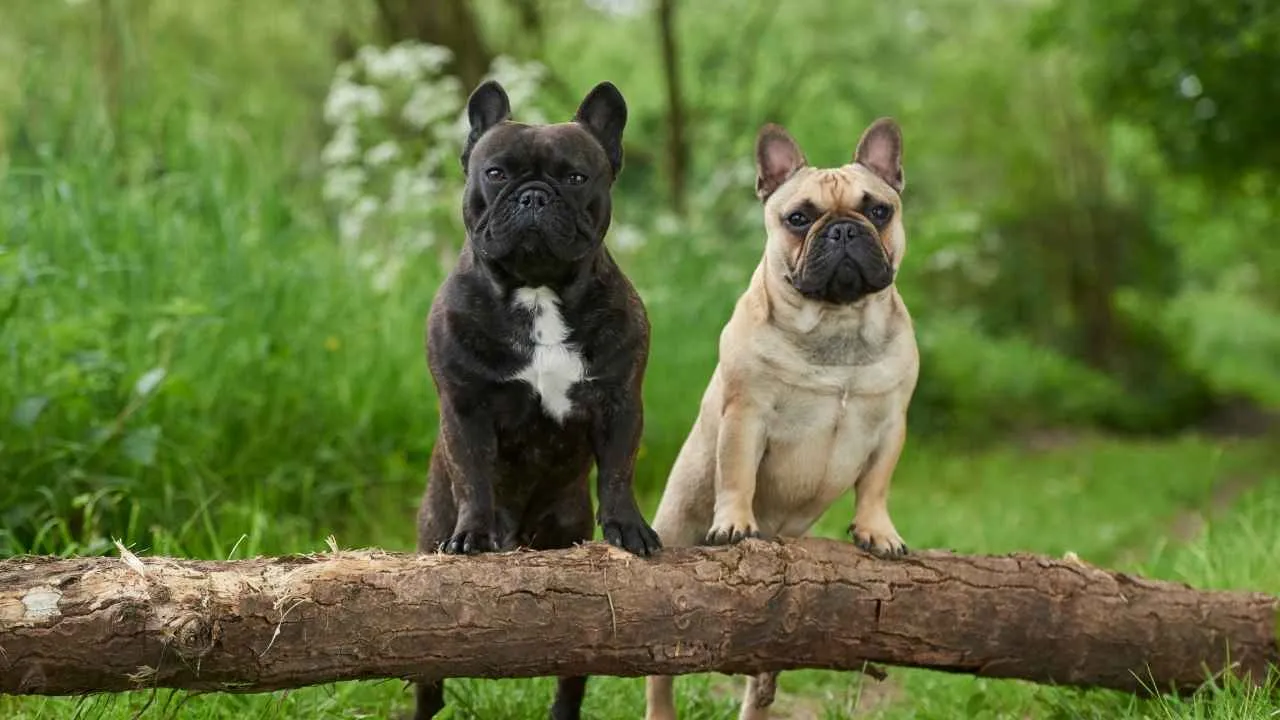
Bulldogs are a compact breed with a shorter lifespan, typically living around 8 to 12 years. Their laid-back nature and sturdy build make them popular, but they can face certain health challenges due to their unique body structure.
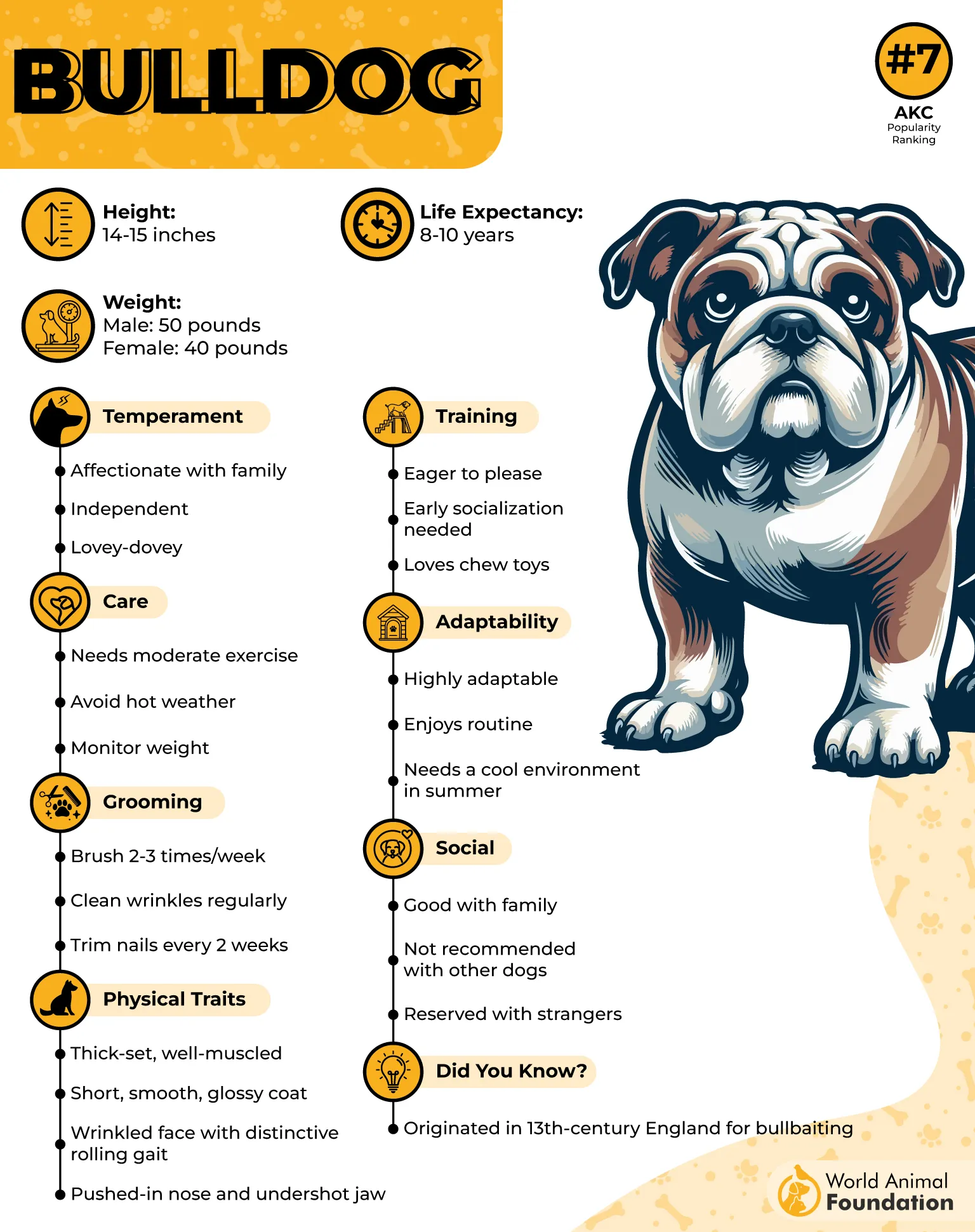
Bulldogs are best known for their distinctive wrinkled faces and stocky build. Despite their appearance, they are gentle and affectionate. However, their short muzzle makes them prone to breathing issues, so they require careful monitoring in hot weather.
Exercise needs for Bulldogs are moderate, with short walks being enough to keep them healthy. They’re prone to weight gain, so monitoring their diet is essential to avoid obesity, which can worsen health problems like joint issues.
Training a Bulldog should be done gently. They can be a bit stubborn, so patience is key. Positive reinforcement methods work best, and keeping sessions short helps maintain their focus. They enjoy making their owners happy.
Though Bulldogs require minimal grooming due to their short coat, regular cleaning of their wrinkles is essential to avoid infections. A gentle wipe down with a damp cloth after walks keeps their skin folds clean and healthy.
Fun Fact
Bulldogs were originally bred for bull-baiting, a practice where dogs were used to hold onto a bull. Thankfully, the practice has long been banned, and Bulldogs today are much more likely to be found lounging on the couch.
Conclusion
For prospective dog owners, understanding the reality of the shortest life expectancy in certain breeds is a responsible step in dog ownership. These dogs may not live as long, but their impact is no less powerful. Their presence, loyalty, and companionship offer a meaningful experience during their limited years.
Health challenges like canine hip dysplasia and other breed-specific issues require early attention. Regular checkups, proper exercise, and a supportive environment can improve a dog’s life, ensuring each year is lived well. Awareness empowers owners to provide the best care possible.
Breeds like the Cavalier King Charles Spaniel, Toy Poodles, and Yorkshire Terrier are known for longer lifespans and therefore are not typically found among dogs with the shortest life expectancy.
Though these breeds have shorter lifespans, the emotional bond they create is lasting. Preparing for their unique needs makes their journey with you more comfortable, memorable, and deeply rewarding.


